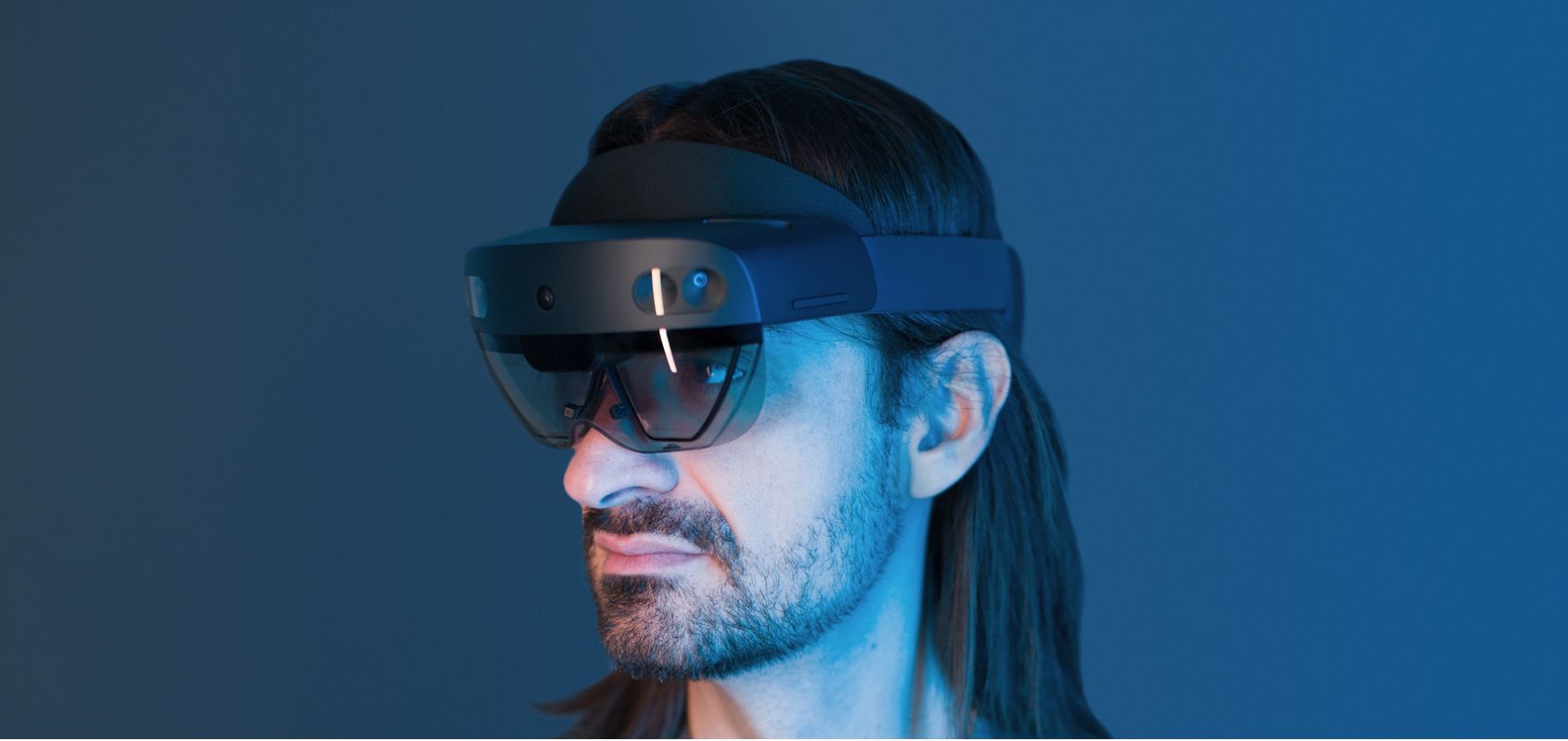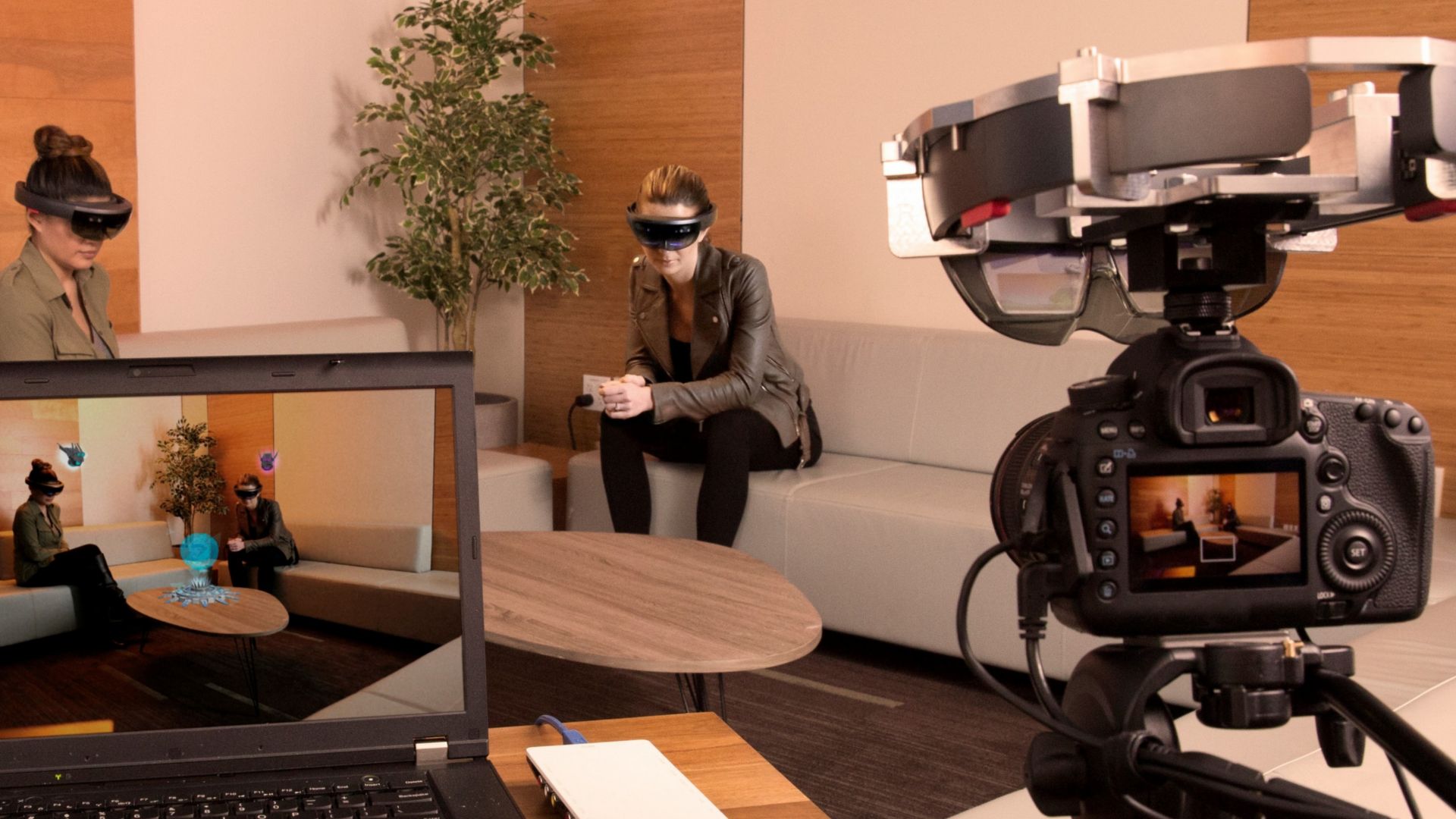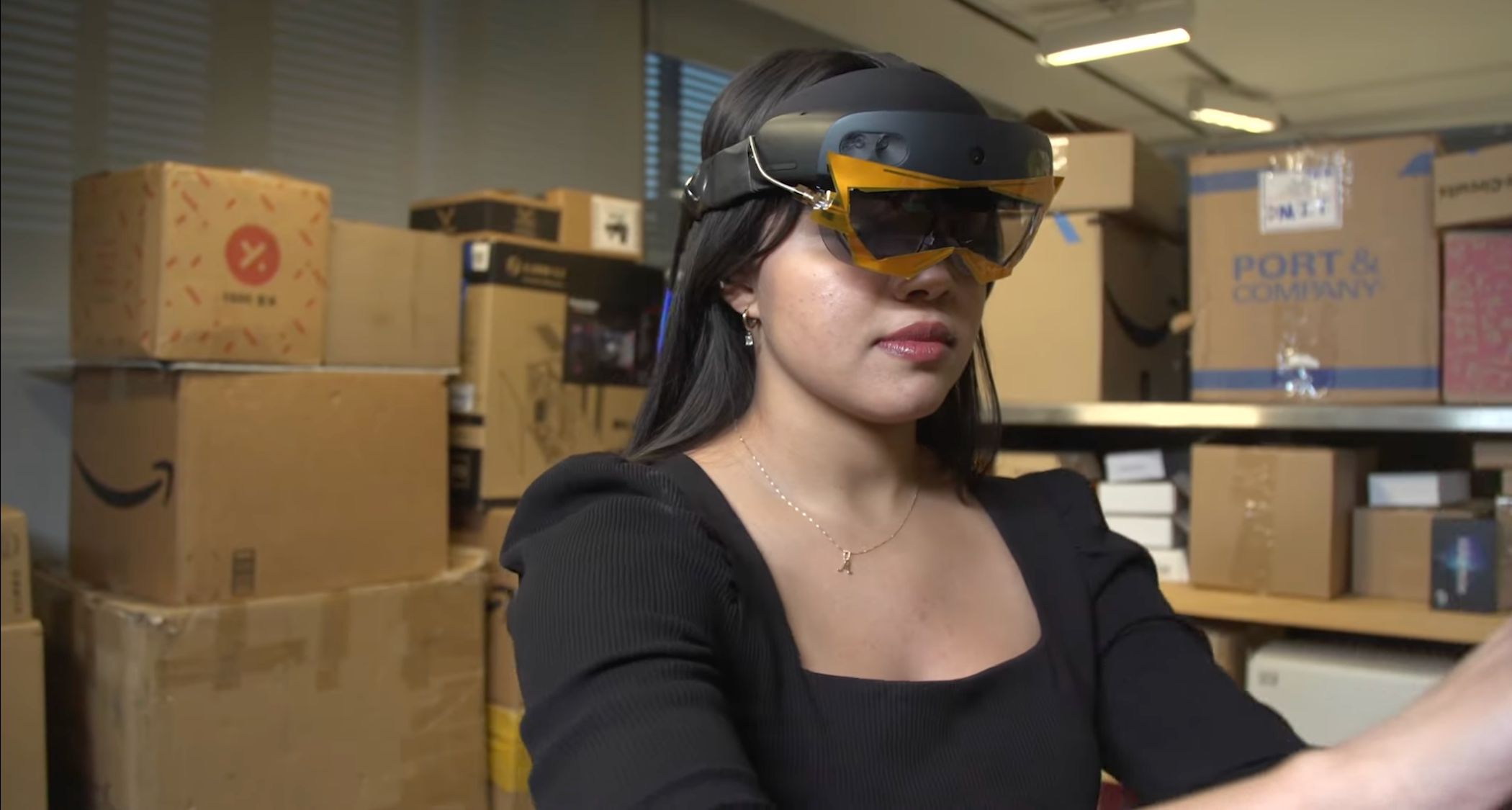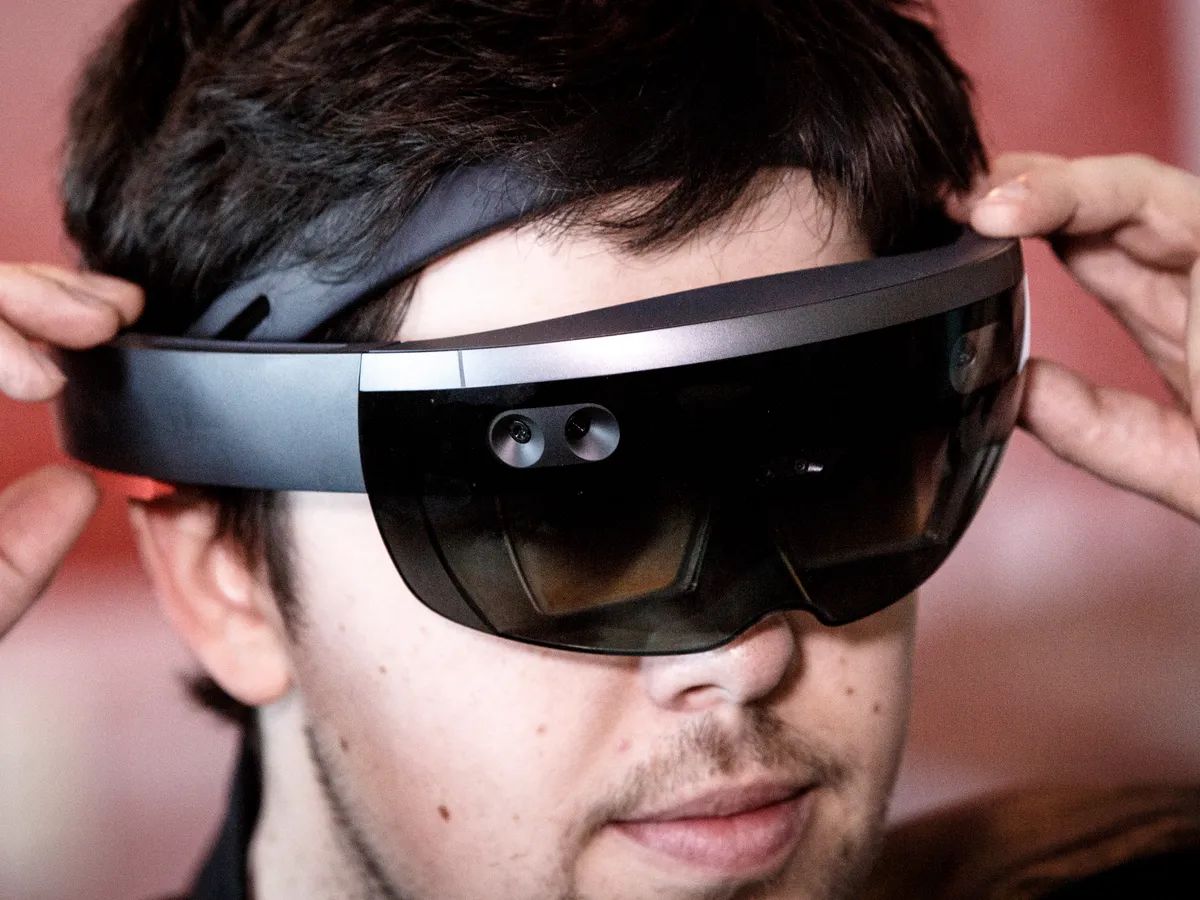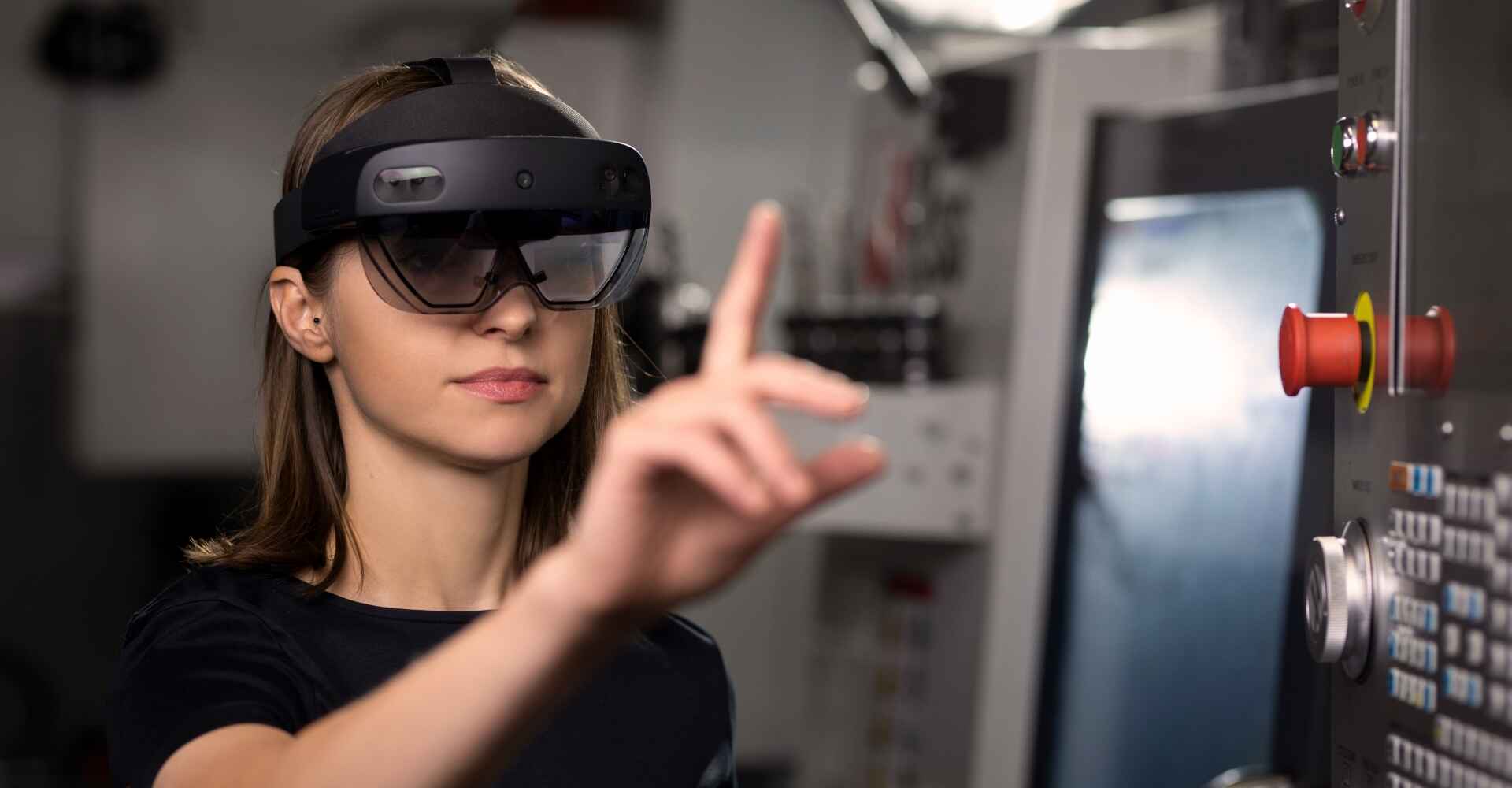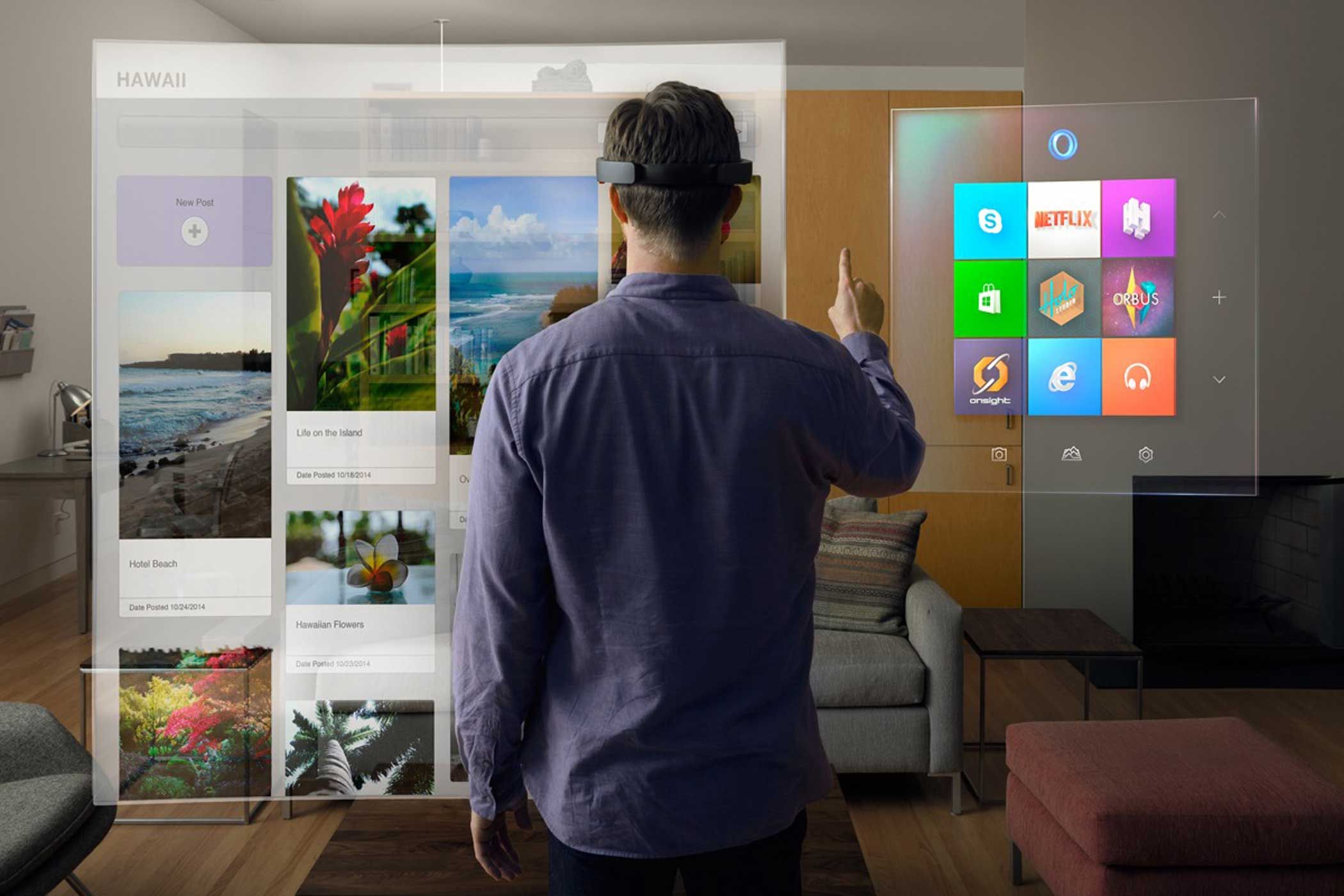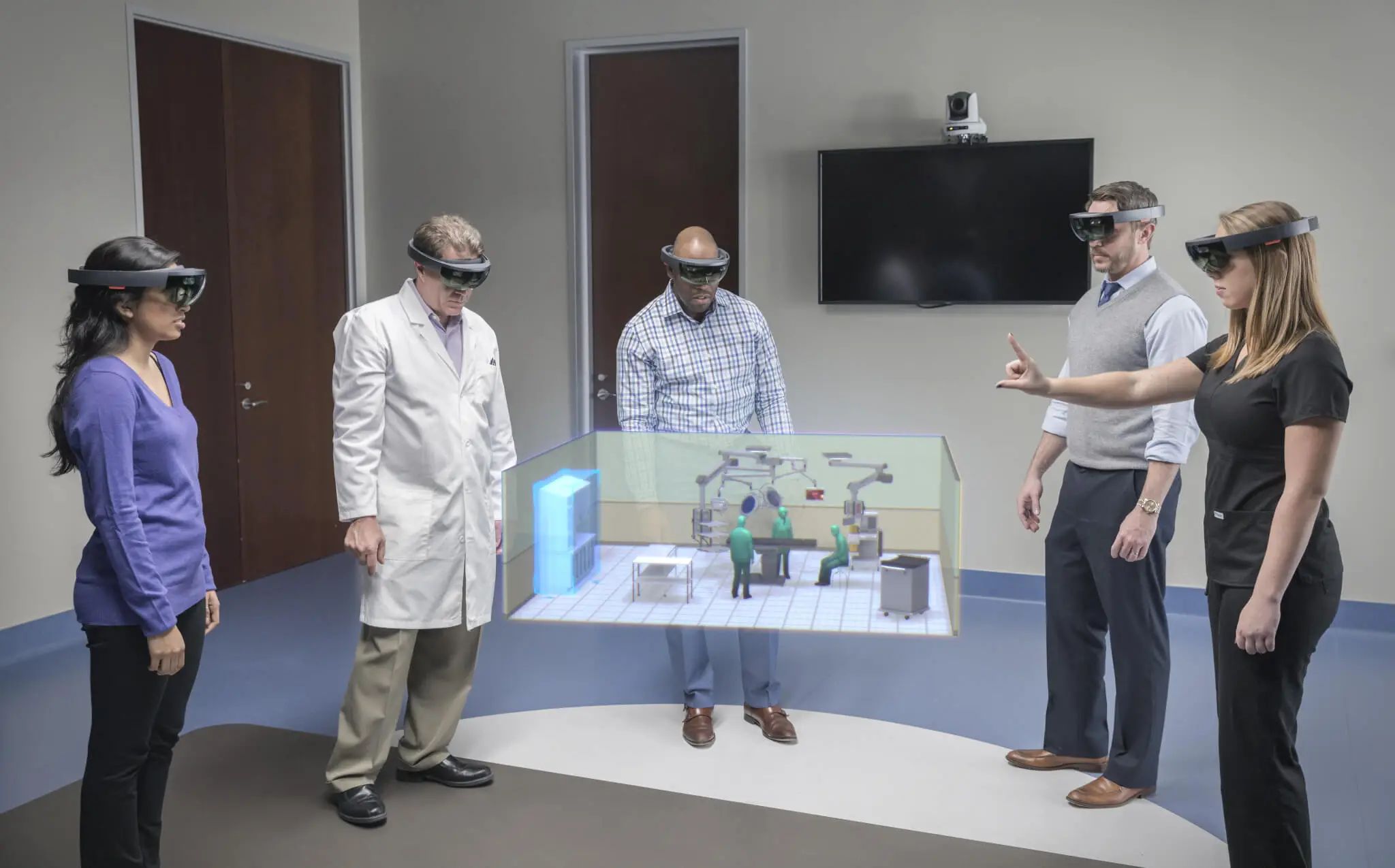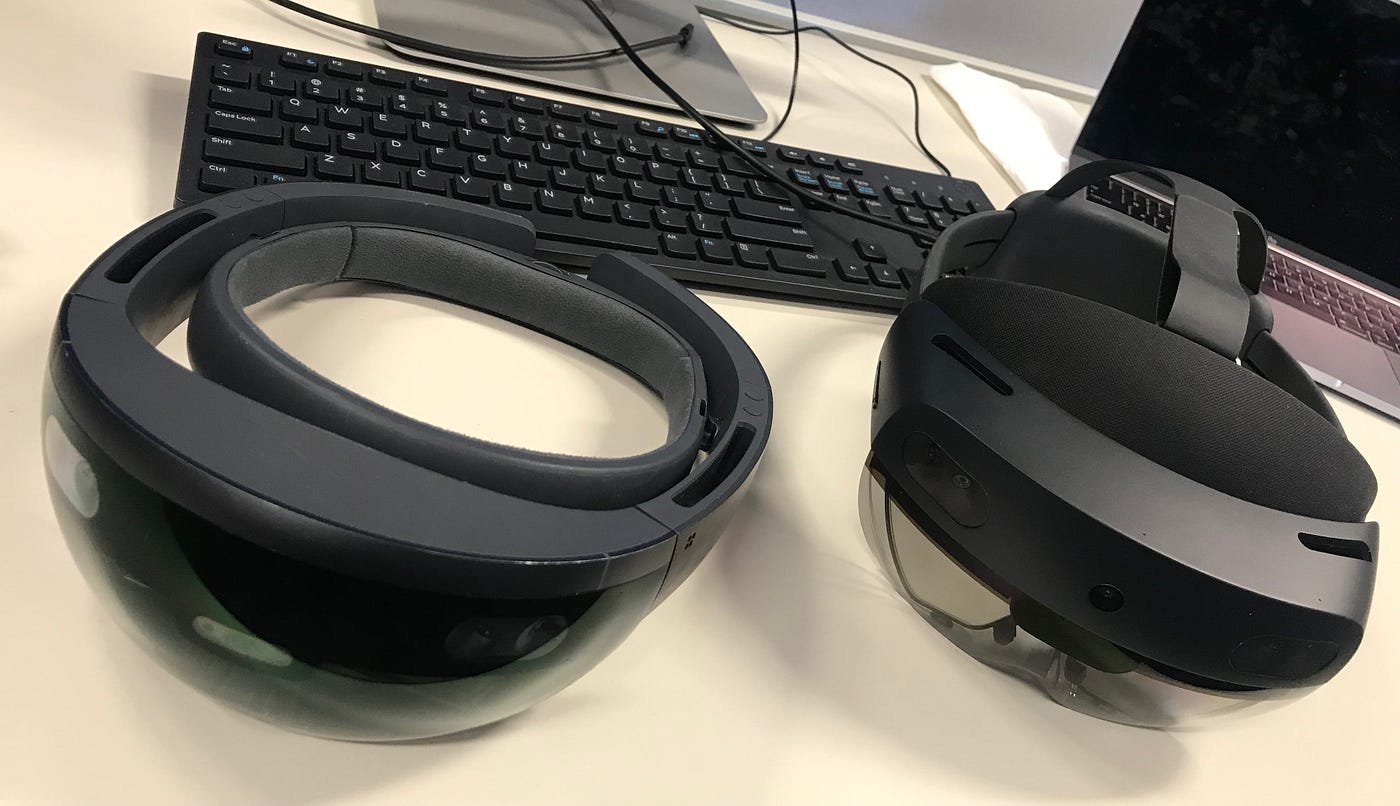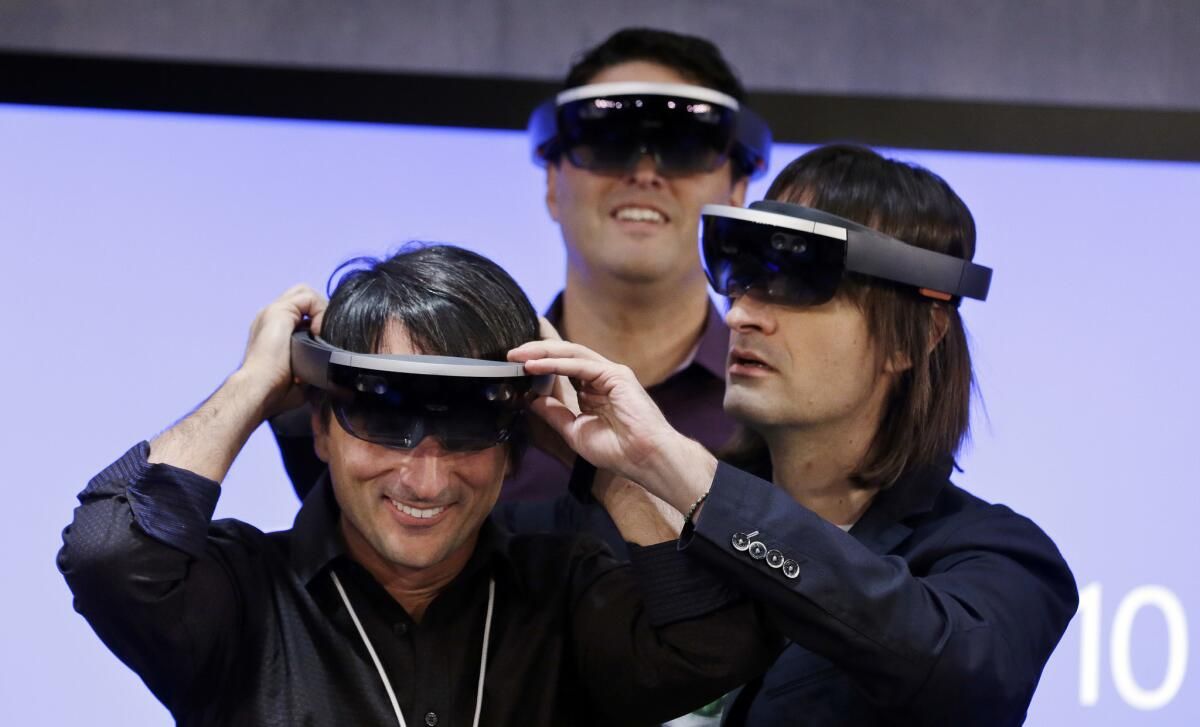Introduction
Technology has always been a driving force for innovation, pushing the boundaries of what is possible. One of the most exciting advancements in recent years is the development of the HoloLens. This revolutionary device combines virtual reality (VR) and augmented reality (AR) to create an immersive experience unlike any other.
The HoloLens is a wearable headset developed by Microsoft that allows users to interact with holograms in a three-dimensional space. It provides a unique blend of the physical and digital worlds, enabling users to visualize and manipulate virtual objects alongside real-world environments.
In this article, we will explore the fascinating world of HoloLens development. We will delve into the intricate process of creating this groundbreaking technology, from the initial design stages to the final product. Join us as we uncover the secrets behind the construction of this remarkable device.
Developing the HoloLens requires an exceptional team of experts with a diverse range of skills. From hardware designers to software engineers, each member plays a crucial role in bringing the device to life. Let’s take a closer look at the dynamic and talented minds behind the scenes.
What is HoloLens?
Before diving into the development process, it is important to have a clear understanding of what exactly the HoloLens is. The HoloLens is a cutting-edge mixed reality device developed by Microsoft. It combines elements of virtual reality (VR) and augmented reality (AR) to create a unique and immersive user experience.
Unlike traditional VR headsets that completely immerse users in a virtual world, the HoloLens overlays interactive holograms onto the real world. This means that users can still see and interact with their physical surroundings while also being able to interact with digital content. The holograms are rendered with high fidelity and appear to be seamlessly integrated into the user’s environment, giving them a truly interactive and immersive experience.
The HoloLens is equipped with a range of sensors and cameras that enable it to understand the user’s environment and track their movements. This allows it to accurately place and anchor holograms in the real world, creating the illusion that they are actually there. Additionally, the HoloLens features spatial sound technology, which enhances the immersion by ensuring that sound appears to come from the virtual objects in the user’s field of view.
The device itself consists of a lightweight, wearable headset that is comfortable to wear for extended periods of time. It is designed to be wireless, eliminating the need for cumbersome cables, and incorporates a high-resolution display that provides sharp and vibrant visuals. The HoloLens also includes an array of built-in sensors, such as an accelerometer and gyroscope, to accurately track the user’s head movements and gestures.
The possibilities with the HoloLens are vast and diverse. From gaming and entertainment to education and training, the device has the potential to revolutionize how we interact with digital content. Imagine being able to explore distant planets in a virtual space, collaborate with colleagues in a shared mixed reality environment, or learn complex concepts through immersive simulations. The HoloLens opens up a whole new world of possibilities.
In the next sections, we will delve into the fascinating journey of how the HoloLens is developed, from designing the hardware to developing the software and applications. So, let’s strap on our virtual reality goggles and take a deeper look into the captivating world of HoloLens development.
The Development Team
Developing a ground-breaking technology like the HoloLens requires a highly skilled and dedicated team of experts. Microsoft assembled a talented group of individuals with diverse backgrounds and expertise to bring this remarkable device to life.
The development team behind the HoloLens consists of hardware designers, software engineers, user interface specialists, researchers, and many other professionals. Each member plays a vital role in the creation of this innovative product, contributing their unique skills and knowledge to the project.
The hardware designers are responsible for crafting the physical components of the HoloLens. They focus on creating a lightweight, comfortable, and aesthetically pleasing headset that users can wear for extended periods without discomfort. These designers work closely with engineers to ensure that the hardware is functional and reliable while maintaining an elegant design.
On the software side, teams of engineers collaborate to develop the operating system and applications that power the HoloLens. They work tirelessly to create a seamless user experience, developing intuitive gestures and interactions that allow users to interact with holograms effortlessly. Additionally, these software engineers optimize the performance and stability of the system, ensuring smooth operation even with demanding applications.
The user interface specialists work closely with the software team to design an intuitive and visually appealing interface. They focus on creating an immersive experience that allows users to seamlessly navigate between the real world and the virtual world. These specialists take into account factors such as user feedback, ergonomics, and accessibility to ensure that the HoloLens is user-friendly for a wide range of individuals.
In addition to the hardware designers and software engineers, the development team also includes researchers who push the boundaries of what is possible. They explore new technologies and techniques to enhance the capabilities of the HoloLens and drive innovation within the mixed reality field.
The collaboration and synergy among these diverse team members are crucial in creating a device that not only meets technical specifications but also exceeds user expectations. By bringing their respective expertise together, the development team is able to tackle complex challenges and overcome obstacles to deliver a truly exceptional product.
Now that we have gained insight into the talented individuals behind the HoloLens, it’s time to explore the intricate process of designing the hardware that powers this groundbreaking device.
Designing the Hardware
The design of the HoloLens hardware is a meticulous and iterative process that involves a combination of engineering, ergonomics, and aesthetics. The goal is to create a wearable device that not only delivers cutting-edge mixed reality experiences but is also comfortable to wear for extended periods.
The hardware design team starts by considering the user experience and the functionality of the device. They work closely with the software team to understand the requirements and limitations of the HoloLens system. This collaborative approach ensures that the hardware is designed to seamlessly integrate with the software, creating a cohesive and immersive experience for the user.
One of the key considerations in hardware design is the form factor. The HoloLens team strives to create a lightweight and compact headset that can be worn comfortably for hours. This involves careful selection of materials, optimizing weight distribution, and ensuring a secure fit on the user’s head. The overall design is streamlined and sleek, with minimalistic elements that blend seamlessly with the user’s environment.
The display system is another critical aspect of the hardware design. The HoloLens incorporates high-resolution optics and a holographic waveguide, which allows virtual objects to be overlaid onto the user’s field of view. This advanced optical system provides sharp and vibrant holograms with a wide field of view, enhancing the immersive experience.
Comfort and ergonomics are given utmost importance during the design process. The headset is designed to distribute weight evenly across the user’s head, reducing strain and discomfort. Adjustable straps and padding ensure a customized fit for different head sizes and shapes. Additionally, the device is engineered to allow for proper ventilation and prevent overheating during extended use.
Another crucial aspect of hardware design is the integration of sensors and cameras. The HoloLens includes an array of sensors, such as accelerometers, gyroscopes, and depth sensors, which enable precise tracking of the user’s position and movements. These sensors work in conjunction with the cameras to understand the user’s environment, allowing for accurate placement and interaction with holograms.
Durability and robustness are also considered during the hardware design phase. The HoloLens is engineered to withstand everyday use and potential accidental impacts. The materials used are chosen for their strength and durability, ensuring that the device can withstand the rigors of a demanding environment.
The hardware design for the HoloLens is a fascinating blend of technology, ergonomics, and aesthetics. The team meticulously refines the design through multiple iterations, incorporating user feedback and addressing any shortcomings. This iterative process allows for continuous improvement and refinement, resulting in a sleek, comfortable, and high-performance device.
Now that we have explored the intricacies of hardware design, it’s time to dive into the fascinating realm of software development for the HoloLens.
Creating the Software
The software development process for the HoloLens is a critical aspect of bringing the device to life. It involves creating a robust operating system and building immersive applications that leverage the full potential of mixed reality.
The software development team starts by developing the operating system specifically designed for the HoloLens. This operating system provides the foundation for running mixed reality applications and managing the device’s hardware components. It is optimized to deliver a seamless and responsive user experience, while also providing the necessary tools for developers to create innovative applications.
Creating software for the HoloLens involves a unique set of challenges compared to traditional software development. Unlike smartphones or computers, the HoloLens operates in a three-dimensional space, overlaying holograms onto the real world. This requires a deep understanding of spatial computing and developing user interfaces that facilitate natural and intuitive interactions.
The software team employs a range of development tools and platforms to create applications for the HoloLens. They utilize programming languages like C# and C++, along with frameworks such as Unity or Microsoft’s own Mixed Reality Toolkit, to build immersive experiences. These tools enable developers to take advantage of the HoloLens’ capabilities, including spatial mapping, gesture recognition, and voice commands.
User interface design is a crucial aspect of software development for the HoloLens. The team focuses on creating intuitive and efficient interactions that allow users to seamlessly transition between the real and virtual worlds. This involves designing gesture-based interactions, voice commands, and gaze tracking to manipulate and interact with holograms. The goal is to create a user interface that feels natural and enhances the overall mixed reality experience.
Testing and debugging are integral parts of the software development process. The HoloLens software team conducts rigorous testing to ensure that applications perform efficiently and accurately. They also focus on optimizing performance and stability, minimizing lag or latency to create a seamless and immersive experience for the user.
Continuous integration and version control systems are in place to manage the development workflow efficiently. Collaboration among the software development team is crucial to ensure smooth integration of features and maintain consistency across applications.
Security is also a top priority when developing software for the HoloLens. The team implements robust security measures to protect users’ data and ensure the device is resistant to unauthorized access or malicious attacks.
The software development process for the HoloLens is an ongoing endeavor, with regular updates and improvements being rolled out to enhance the device’s capabilities. Microsoft and its development community are constantly pushing boundaries, exploring new possibilities, and expanding the potential of mixed reality.
Now that we have gained insight into the intricacies of software development, let’s move on to exploring how the operating system for the HoloLens is built.
Building the Operating System
The operating system is the backbone of any device, and the HoloLens is no exception. Building the operating system for the HoloLens involves a complex and meticulous process to create a robust and optimized platform that powers the mixed reality experience.
The development of the HoloLens operating system begins with defining the system architecture and hardware requirements. Microsoft’s team of software engineers collaborates closely with the hardware designers to understand the capabilities and limitations of the device. This collaboration ensures that the operating system is optimized to run efficiently on the HoloLens hardware, providing seamless performance.
The operating system for the HoloLens is based on Windows 10, which has been enhanced and customized to meet the unique demands of mixed reality. This modified version of Windows includes specific features and APIs that enable the rendering and interaction with holograms, as well as the management of sensors and tracking systems.
Core to building the operating system is the integration of spatial understanding and mapping. The HoloLens utilizes a combination of cameras, sensors, and algorithms to create a real-time map of the user’s environment. This spatial mapping allows the device to accurately place holograms in the physical world and enable user interactions with them. The operating system handles the processing and interpretation of the data provided by these internal sensors and cameras, enabling an immersive mixed reality experience.
The operating system also handles the interaction with other key components of the HoloLens, such as the gesture recognition system and the spatial sound technology. These features enhance user interactions and provide a more realistic and engaging mixed reality experience. The software engineers carefully design and implement the necessary algorithms and systems to enable these features and ensure that they work seamlessly with the hardware.
Another crucial aspect of building the operating system is ensuring robust security and privacy. Microsoft employs various security measures to protect user data and prevent unauthorized access. This includes implementing secure authentication mechanisms, data encryption, and privacy controls to give users peace of mind when using the HoloLens.
The development team also focuses on optimizing the operating system for performance and energy efficiency. This involves analyzing and fine-tuning the codebase to reduce resource usage and minimize power consumption. These optimizations result in longer battery life and a smoother user experience, crucial for sustained usage of the HoloLens.
Throughout the development process, the team conducts extensive testing and debugging to ensure the stability and reliability of the operating system. This includes both internal testing and external beta testing, gathering feedback and making necessary improvements to enhance the system’s performance and usability.
Building the operating system for the HoloLens is an ongoing effort, with regular updates and enhancements rolled out to users. These updates not only introduce new features and functionalities but also address any bugs or performance issues that may arise. Microsoft’s commitment to iteratively improving the operating system ensures that the HoloLens remains at the forefront of mixed reality technology.
Now that we’ve explored the intricate process of building the operating system, let’s delve into the development of applications that leverage the capabilities of the HoloLens.
Developing the Applications
The HoloLens offers a vast array of possibilities for developers to create immersive and interactive applications that leverage the capabilities of mixed reality. Developing applications for the HoloLens involves a unique set of tools and techniques to bring virtual objects to life and provide users with extraordinary experiences.
The development of applications for the HoloLens revolves around the concept of holographic computing. Developers use frameworks such as Unity or the Microsoft Mixed Reality Toolkit to build these applications, taking advantage of the HoloLens’ spatial mapping, gesture recognition, and voice control capabilities.
One of the key aspects of developing HoloLens applications is creating holograms. Holograms are interactive virtual objects that can be placed, manipulated, and interacted with in the user’s physical environment. Developers use 3D modeling tools and software to design and create these holographic assets, taking into consideration factors like lighting, scalability, and realism.
The applications are designed to seamlessly blend the real world with virtual objects, allowing users to interact with holograms via a combination of gestures, voice commands, and gaze tracking. The interactive gestures include tapping, pinching, and grabbing to manipulate holographic objects. Voice commands enable users to control and interact with the application using their voice, while gaze tracking allows for targeted interactions with holograms simply by looking at them.
Developers also focus on creating intuitive user interfaces and navigation techniques within the applications. These interfaces are designed to be user-friendly and provide seamless transitions between the real world and the virtual world. The goal is to make the experience as natural and intuitive as possible, providing users with an effortless learning curve.
Testing plays a crucial role in the development process of HoloLens applications. Developers rigorously test their applications on the HoloLens device, ensuring that they perform flawlessly and provide a rich and immersive mixed reality experience. This includes checking for alignment and stability of holograms, performance optimization, and usability across different environments.
Beta testing is also conducted to gather feedback from users and make improvements based on their suggestions. Microsoft provides developers with tools and resources to distribute their applications to a wider user base, allowing for real-world feedback and iterative improvements.
The diversity of applications that can be developed for the HoloLens is vast. From educational and training simulations to architectural visualizations, gaming experiences, and industrial applications, the possibilities are virtually endless. The HoloLens has the potential to reshape various industries and revolutionize the way we interact with digital content.
As the HoloLens platform evolves, Microsoft continues to provide developers with support and updates to enhance the application development experience. This includes new features, APIs, and development tools that enable developers to push the boundaries of mixed reality and create even more immersive and innovative applications.
Now that we have explored the development of applications, let’s move on to the crucial process of testing and debugging these applications for a seamless experience on the HoloLens.
Testing and Debugging
Testing and debugging are integral parts of the development process for HoloLens applications. The goal is to ensure that the applications perform optimally, provide a seamless user experience, and minimize any potential issues or bugs. Robust testing and thorough debugging are crucial to deliver high-quality applications that harness the full potential of mixed reality.
Testing begins early in the development cycle, involving both automated and manual testing processes. Automated testing frameworks are used to execute predefined test cases, ensuring that basic functionality is working as expected. This helps identify any regressions or issues that may arise during the development process.
Manual testing is equally important, allowing developers to engage with the application in a real-world scenario. This includes evaluating the user interface, testing different interactions, and verifying the application’s performance across various HoloLens devices. Manual testing enables developers to identify any usability issues or unforeseen behavior that may not be caught through automated testing.
During the testing phase, developers pay particular attention to the alignment and stability of holograms. They ensure that holograms are accurately anchored in the user’s environment and respond correctly to user interactions. Accuracy and precision play a vital role in delivering an immersive mixed reality experience, and rigorous testing helps ensure that holograms behave as expected.
Performance optimization is another critical aspect of testing. Developers analyze the performance of their applications and identify any bottlenecks or areas that could be improved. This includes optimizing rendering techniques, reducing latency, and optimizing resource usage to provide a smooth and responsive experience for users.
Debugging is an iterative process that involves identifying, analyzing, and fixing issues in the application’s codebase. Developers use debugging tools and techniques to identify the root cause of any issues or unexpected behavior. They examine error logs, exception handling, and system diagnostics to pinpoint and resolve any bugs or glitches that may impact the application’s performance or functionality.
Beta testing also plays a crucial role in the testing phase, as it provides an opportunity to gather feedback from a wider user base. This real-world feedback enables developers to address any usability issues, uncover edge cases, and make necessary improvements to enhance the application’s usability and user experience.
Microsoft provides developers with various testing tools and resources to aid in the debugging process. These tools assist in profiling and analyzing application performance, memory usage, and runtime behavior. By leveraging these tools, developers can identify and address any performance issues or memory leaks, ensuring a smooth and optimized user experience.
The testing and debugging process is an ongoing effort and continues even after the application is released. Developers actively monitor user feedback and bug reports, providing regular updates and patches to address any reported issues. Microsoft’s commitment to continuous improvement allows developers to create robust and reliable applications that push the boundaries of what is possible in mixed reality.
Now that we have explored the importance of testing and debugging, let’s move on to the final stages of integration and optimization in the HoloLens development process.
Integration and Optimization
Integration and optimization are the final stages in the development process of HoloLens applications. These stages focus on ensuring the seamless integration of various components and optimizing the overall performance of the application to provide a superior mixed reality experience.
Integration involves bringing together different elements such as the user interface, interactions, audio, and visual components to create a cohesive and immersive experience. Developers ensure that all components work harmoniously, considering factors like alignment, scaling, and positioning of holograms within the user’s environment. This integration ensures that the application feels natural and intuitive, enhancing user engagement and immersion.
Optimization is a critical aspect of the development process as it aims to fine-tune the application’s performance, responsiveness, and efficiency. Developers analyze and optimize various aspects of the application, including rendering techniques, resource usage, and latency. This optimization process ensures that the application runs smoothly and responsively on HoloLens devices, delivering a seamless and immersive user experience.
Rendering optimization is particularly important as it impacts the visual quality and performance of the application. Developers optimize the rendering pipeline, reducing unnecessary calculations and improving efficiency. They employ techniques such as occlusion culling, level of detail (LOD) management, and texture compression to deliver high-quality visuals without sacrificing performance.
Resource management is a key consideration in optimizing the application. Developers strive to minimize memory usage and avoid memory leaks, ensuring efficient utilization of system resources. This helps to maintain a stable performance and prevent crashes or lag during application usage.
Input responsiveness is another area of optimization. Developers ensure that user interactions, such as gesture recognition and voice commands, are responsive and accurate. This involves fine-tuning algorithms and calibration processes to provide precise and reliable interactions, enhancing the overall user experience.
During the integration and optimization stages, developers also explore techniques to enhance the audio experience. This may include spatial sound technology that provides an immersive audio experience, accurately positioning sound sources in the user’s environment. Developers fine-tune audio settings to optimize sound quality, volume, and directionality, further enhancing the immersive nature of the application.
In addition to performance optimizations, developers also conduct thorough quality assurance checks to identify any remaining issues or bugs. This includes running comprehensive regression tests, ensuring cross-device compatibility, and verifying that all features and functionalities work seamlessly.
Once the integration and optimization stages are complete, developers prepare the application for release. This involves packaging the application, documenting its features and functionality, and ensuring compliance with Microsoft’s guidelines and requirements.
Integration and optimization are vital stages in the development process to provide users with a polished, seamless, and immersive mixed reality experience. By focusing on integration and optimizing the application’s performance, developers can create high-quality applications that fully harness the potential of the HoloLens and provide users with unforgettable mixed reality experiences.
Now that we have explored the integration and optimization stages, it’s time to wrap up our journey through the HoloLens development process.
Conclusion
The development of the HoloLens is a complex and multidisciplinary process that involves a skilled team of experts working together to create a revolutionary mixed reality device. From the design of the hardware to the development of the operating system and applications, each step in the process contributes to creating a seamless and immersive user experience.
The HoloLens combines virtual reality and augmented reality, allowing users to interact with holographic content in their physical environment. It opens up a world of possibilities across various industries, including gaming, education, healthcare, and more. With its advanced sensors, high-resolution display, and intuitive user interface, the HoloLens provides a unique and captivating mixed reality experience.
The development team behind the HoloLens comprises hardware designers, software engineers, user interface specialists, and researchers, each playing a crucial role in bringing the device to life. They work collaboratively to design a comfortable and aesthetically pleasing headset, develop a robust operating system, and create immersive applications that leverage the HoloLens’ capabilities.
The software development process focuses on creating a seamless user experience, developing intuitive gestures, and optimizing performance and stability. Testing and debugging ensure the reliability and quality of applications, and continuous updates and improvements are rolled out to further enhance the HoloLens’ capabilities.
The HoloLens development process is a journey of integration and optimization, ensuring that all components work seamlessly and the application delivers a smooth and immersive experience. From aligning holograms and optimizing rendering techniques to resource management and fine-tuning input responsiveness, every detail is carefully refined to provide a superior mixed reality experience.
The HoloLens represents the future of mixed reality and provides a glimpse into the possibilities of a world where the digital and physical realms seamlessly coexist. As the technology continues to evolve and improve, the potential applications and impact of the HoloLens are limitless.
So, strap on your HoloLens and prepare to embark on an incredible journey that merges the virtual and real worlds. Explore new dimensions, learn in extraordinary ways, and push the boundaries of what is possible with this revolutionary mixed reality device.







